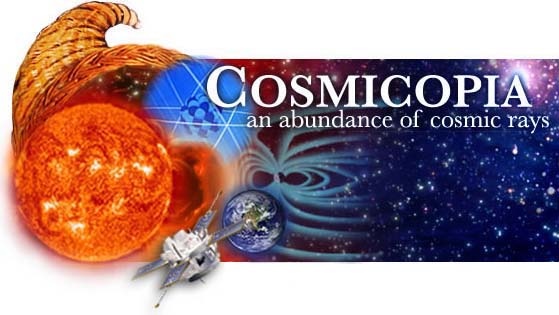
Ask Us
Space Weather
Sun's Magnetic Field Reversing?
I have heard that the Sun's magnetic field will reverse in 2012 with 'unknown consequences'. Are there any theories about what might happen, and if so, what are they?In fact, the Sun's magnetic field is in the process of reversing now (2000-2001), during what's known as solar maximum. Solar maximum occurs approximately every 11 years. Solar activity (sunspots and coronal mass ejections, for example) increases during solar maximum, resulting in more active space weather around Earth, some of the consequences you ask about. You can learn more about space weather by reading Cosmicopia's space weather page.
Beth Barbier
(March 2000)Space Weather
I recently watched a show on television that mentioned that the power in Montreal went out in 1989 due to a cosmic storm. They also said that these storms occur every 11 years, and the next one is due to affect Earth in the year 2000. What exactly can we expect to happen, and how can a person prepare in advance for it if we are to be seriously affected?Large outbursts on the Sun, called coronal mass ejections, can affect the Earth's magnetic field when they hit the Earth. This change in the magnetic field can cause back-currents in power lines that have caused power failures like the one in Montreal. They can also degrade oil pipelines, cause increased atmospheric drag on satellites, disrupt communications, and the particles can even directly harm satellite electronics or astronauts.
These outbursts can (and do) happen at any time, but the biggest ones, which do the most damage, tend to happen when the Sun is at the maximum of it's variable intensity every 11 years (the Sun is a variable star). You can look at Cosmicopia's solar activity page for more information on the Sun's variability. The next solar maximum is in 2000 or 2001.
NOAA (the National Oceanic and Atmospheric Administration) tries to forecast these geo-magnetic storms with sunspot observations, and using spacecraft such as ACE to warn the power companies and astronauts so that they can be ready for such events. Except for blackouts, or if you are in space, there is virtually no personal risk from these storms.
Dr. Eric Christian
Effects on Earth of a Large Solar Flare
I have a question about CME's effects on electronics. There is a lot of sensationalistic talk about total disruption of power from an X9-class CME. Can an X8 or 9 CME produce an electromagnetic pulse large enough to take out power grids? How about hand-held electronics or electronic ignitions in vehicles?Here's a brief explanation of what can happen in a large solar event.
When an X9 or other large flare goes off on the front side of the sun (the side facing Earth), the other thing that happens is that a coronal mass ejection (CME) erupts from the sun, carrying 1-10 billion tons of material at speeds of >2000km/sec (several million mph). The CME also carries strong magnetic fields often wrapped into a rope-like-configuration. About a day after the flare, the CME can reach the earth. If a large fraction of the CME magnetic field is southward directed, it can reconnect with the earth's magnetic field on the front side (the side facing the sun) of the earth (which is directed northward), thereby releasing a great deal of energy and causing a large magnetic storm (as well as aurorae, and other effects). It is this disruption of the earth's magnetic field (a magnetic storm) that has the capability to induce large currents in power transmission lines, sometimes causing transformers to burn out and cause power outages. The best known example was the 1989 magnetic storm that knocked out the power to the province of Quebec for ~9 hours. In addition, interference with communications and GPS accuracy is common. Fortunately, because of the advanced warning provided by missions like ACE and STEREO, the power companies can take preventative actions that help to avoid such consequences.
I do not know of any examples of hand-held devices ever being directly affected, but transmission lines and pipelines can be affected, as well as communications with satellites and airplanes. So indirectly, your personal electronic devices can be affected.
So the impacts are real, but I will agree with your suggestion that the news media sometimes overhype the risks.
Dr. Richard Mewaldt
(January 2012)Space Weather Resources
I'm hoping to sign onto a news list that will keep me posted on the solar wind and geomagnetic storms. Can you suggest help?The US National Oceanic and Atmospheric Administration (NOAA) has a Space Environment Center that does real time monitoring of geomagnetic disturbances that might affect GPS, and has an email warning system. You can check out their Space Weather Advisories page where there are further explanations of the advisory information.
The following Web sites also have information on current space weather with some fairly good explanations:
You and your kids might be interested in knowing that the ACE mission team has developed some education briefs and investigations on space weather -- some based on the Rice University Web site. Let us know what you think about them.
Dr. Eric Christian and Ms. Beth Barbier
(July 2004)Geomagnetic Storms
I've read about magnetic storms that can affect things on Earth like electrical objects. Where can I find out more about these storms, like data and predictions?There are several ways to measure and predict geomagnetic storms. Our satellite, ACE, measures the solar wind and interplanetary magnetic field coming from the Sun, before it gets to Earth. The solar wind and interplanetary field do not directly affect society and technology, but when these solar disturbances reach the Earth's magnetic field and upper atmosphere, they can cause what we call "geomagnetic storms" which can last for hours to days. It is these storms that can affect communications, power lines, satellites, cause aurora, and who knows what else.
NOAA uses our data to make predictions of when geomagnetic storms will occur and it may be possible for you to get on their mailing list. Try the Space Environment Center's Space Weather Alerts. If you cannot get on their alert list, the latest alerts are available at Space Weather Now.
There is a list of a lot of organizations that use our data to predict space weather on the ACE web site. Some of these post their predictions on the web.
Another place where NOAA documents its predictions of geomagnetic activity is at Costello Geomagnetic Activity Index.
You asked for an archive of when there were geomagnetic storms. One measure of the extent to which the Earth's magnetic field is disturbed is given by what is called the "Dst Index", which is based on measurements by several magnetometer stations around the world. Measurements of Dst can be found on the web at the Geomagnetic Equatorial Dst Index. There are links there to near-real time Dst (typically less than a day behind real time) as well as provisional and final Dst values going back as far as 1957. For example, look at July 15-16, 2000.
An alternate site for the older data is the NOAA FTP server. The format of the files is a bit different here, but probably more convenient as an entire year is combined into one file, whereas the first site only seems to have one month per file. When Dst is large and negative (e.g., < -100 nanoTesla) then there is a storm. The more negative it is, the larger the storm.
There is another web site that uses ACE data to predict Dst, with very good accuracy. I know that they have records of this and their model predictions for the last few years. This is an example of a way of getting some warning when these storms will occur. See real-time forecasts of the Dst index at the University of Colorado's Laboratory for Atmospheric and Space Physics and their archive of Dst predictions and links therein.
I hope that this helps. I am directing you to these data sets because I think they are closer to what actually affects life and society than the solar wind itself. If what you really want is an archive of solar wind data, then you can find data from ACE over the past 5 years at ACE SWEPAM Level 2 Data . For an intro to space weather, see the page on space weather on this site, or All About Space Weather.
Dr. Richard Mewaldt
Advanced Composition Explorer (ACE) Scientist and "Guest Answerer" for Cosmicopia
(March 2003)Interplanetary Magnetic Field
If you go to Spaceweather.com and notice the IMF data about half way down the left side, you'll see something like this:- Interplanetary Magnetic Field
- Btotal: 7.4 nT
- Bz: 0.1 nT north
Can you tell me how to interpret this data?
The Btotal is the magnitude of the magnetic field (in nanoTesla, which is 1 x 10-9 Tesla), and Bz is the Z-axis component, which points along the north pole axis (i.e., out of the orbital plane of the Earth). For reference, 1 Tesla = 10,000 Gauss, and the Earth's magnetic field is about 0.5 Gauss.
Dr. Louis Barbier
Particles in the Aurora
It is my understanding that the Aurora borealis comes from a stream of charged particles coming in toward the North pole. What type of particles are these, negatively or positively charged, or both? Does this occur at the South pole also? If not, why not? If so, are the particles that stream in at the South pole of opposite charge from those entering at the North pole?Both electrons and positive ions are present in the solar wind, so the Earth is not being charged. Even if it were, what would it discharge to? There are aurorae in the southern hemisphere (Aurora australis), and both electrons and positive ions are trapped in the Earth's magnetic field. They bounce back and forth between the two poles and both types are present at both poles.
Dr. Eric Christian
Northern Lights
I was wondering if there is a Web site that has or will have streaming video of the Northern lights, as they are supposed to be particularly visible this winter and next. If your specialty does not include the northern lights, can you direct me to someone or some place that might have an answer, or interest in seeing such phenomena broadcast.I'm sorry, but I don't know of any Web site that has streaming video of the Northern lights. You might try asking at a site such as the Portable Auroral Imager home page.
Dr. Eric Christian
Northern Lights?
I'm not sure if this is an astronomy question or a meteorological question. On the night of June 2nd, my family was camping in western Austria when a sudden and violent windstorm hit the area. After a little while, the sky toward the North (I think) flashed many times in a very strange fashion. It would flicker as from normal sheet lightning but then it would also "stay on". That is, the light from what we thought was sheet lightning would remain in the sky for about 30 to 45 seconds. Then it would disappear (no fading). After a couple of minutes, the light would come back on. I can't remember for certain, but I think this lasted more than one hour. We did not notice any unusual colors in the light. Any idea what this might have been? Could it have been the Northern Lights?We're not sure either! The Northern Lights are very frequently white (colorless), and only when they are pretty bright are the reds and greens visible. But, they also start near the horizon and move toward the zenith. Aurorae usually fade in and out in brightness, and they don't disappear quickly.
You are a little far south for the Northern Lights (about 46 degrees N?), but Europe has a lower geomagnetic cutoff than North America at the same geolatitude. And there was a large solar event on June 1, and it's possible the magnetosphere was disturbed enough that the Northern Lights extended down to your location.
Drs. Louis Barbier and Eric Christian
Auroral Oval
Can you explain to me why, how, and when the auroral oval sometimes wanders south from the magnetic north pole? (I am in Toronto.)First, the auroral oval is not at the magnetic pole. There are two ovals, one around the northern pole, the other around the southern pole. Roughly they usually have a radius of about 15 degrees, so the aurora is normally north of Toronto. Gillam and Churchill are good places to view the aurora near you. Following solar activity by a few days (the time for the solar wind to travel from the Sun to the Earth), auroral activity may increase. Sporadically the auroral ovals will expand in width and in radius. These events are called auroral substorms. If the expansion is large enough, you will see auroras over Toronto.
Why does this happen? That is one of the prime subjects of current research in space around the Earth. The solar wind brings energy from the Sun to the Earth's magnetosphere. Under certain conditions, more than a usual amount of energy can enter the magnetosphere and be temporarily stored in the magnetosphere by distorting the magnetic field. For reasons that are being argued, this energy can be rather suddenly released. Some of the energy goes into accelerating electrons existing in the magnetosphere and dumping them along the magnetic field lines into the atmosphere. This produces the auroral substorm. The more energy released, the closer to the Earth these electrons are energized. This means that these electrons will strike the atmosphere at lower latitudes and cause the location of the auroral oval to move equator-ward, possibly over Toronto.
You can find on the Web a number of pictures of the aurora from space. You can start at the ISTP "Mission to Geospace" Web page.
Dr. R.A. Hoffman
Do auroral ovals actually wander, or do they just expand and contract and in doing so appear to move more southward and northward?
Your second explanation is correct; the auroral ovals expand and contract. During an aurora substorm, the times when the auroral becomes very active, the oval will expand in latitudinal width, especially in the nighttime sector. The activity actually goes through a general pattern that is quite well documented. Initially, the equatorward boundary of the oval expands, but later in the activity, the poleward boundary can also expand towards the poles. In very large events, the poleward boundary can move towards the equator also, so that the entire oval is moved equatorward. This polar region of little or no auroral activity is called the polar cap. The best way to observe the auroral oval is from imagers in space, like the Polar satellite contains. You can find them at a number of Web sites, like the one given previously or other ISTP pages related to the Polar mission.
Dr. R. A. Hoffman
Polar Project Scientist and "Guest Answerer" for CosmicopiaWe'd like to recommend a good site that explains quite a bit about auroral ovals. Follow the links on the Space Physics Text Book of Oulu site to get more information. -- Beth Barbier
Solar Wind and Earth's Magnetosphere
I am working on a paper on the interaction of the solar wind with the Earth's magnetosphere. Do you know of a source giving the magnitude of the magnetic field of the magnetosphere?Your question has a tremendous amount of latitude in it, both literally and figuratively. The magnitude of the Earth's magnetic field within the magnetosphere varies greatly with location within the magnetosphere. It is not a simple question to answer.
The magnetosphere is formed when the flow of the solar wind impacts the Earth's magnetic field (a dipole field), compressing it, causing magnetic reconnection, causing complex currents to flow, etc. The dipole field changes greatly under the influence of the solar wind.
Try to get a copy of "Physics of the Magnetopause" published by the AGU. That will help.
The magnetic field in the solar wind near Earth is about 5 nT, or 5 x 10(-5) Gauss. The magnetic field on the surface of the Earth is about 0.5 Gauss - big difference.
If you were to imagine a spacecraft passing from the solar wind and into the magnetosphere along the Earth-Sun line (at the sub- solar point) you would see the following:
The 5 nT field changes by a factor of 4 as you pass through the Earth's bow shock. This is a compression wave (discontinuity) that results from a supersonic flow striking the Earth's magnetic field and being stopped).
The magnetic field then climbs by another factor of 4 as the spacecraft passes through the magnetosheath, a turbulent region of flow behind the shock and still upstream of the magnetosphere.
The spacecraft then encounters a region where the flow stops moving toward Earth and flows exclusively around the obstacle that is the Earth's magnetosphere. This is the magnetopause. Behind the magnetopause the magnetic field is about 40 nT. So the compression of the flow has picked up almost a factor of 10 in intensity of the magnetic field (and the plasma density with it).
From this point on, it depends greatly on where you go. If you go Earthward, it is to leading order a dipole field (somewhat squashed, but the scaling is like that). If you go behind the planet, all kinds of things are happening and location is everything.
I really can't go into much more detail than that without a more specific question, and to be honest I mostly work outside the magnetosphere, so my knowledge is limited. But basically if you go from the magnetopause to the Earth's surface, you see a magnetic field that grows ever stronger as you decend within the dipole.
Dr. Charles Smith
(October 2003)Solar Flares and Heat Waves
I am in grade five and doing a project on the Sun and stars. Do big solar flares cause heat waves on Earth?One big solar flare is not enough energy to cause heat waves on Earth, but if the Sun got more active, had many more solar flares and gave off more light, it could cause heat waves. In the early 1800s, there was a mini-Ice Age that appears to have been caused by a decrease in solar activity (the number of sunspots was smaller than usual for many years). But the Earth is large and doesn't respond quickly to something like a single solar flare.
Dr. Eric Christian
Violent Space Weather
What if there was a solar flare or electro-magnetic pulse so violent that while biological life was mostly unaffected, communications satellites, power grids, and electronics of all kinds went out of service indefinitely? Can unusually strong solar activity physically damage electrical and electronic equipment significantly and permanently? Could equipment be shielded to prevent such interference?I don't think that there is any way solar activity could destroy our electronics "permanently" without wiping out the human race. We can shield against virtually anything that is survivable, and there are communication methods that don't use radio waves (laser, fiber optic, etc.). Solar activity could take out electronics and certainly communications in the short term, but with some work, I'm pretty sure we would deal with it.
Dr. Eric Christian
Storm Approaching
The radio announced a storm approaching the Earth. This storm is from a star that exploded two years ago. The announcer also said that there is no need to worry because the storm is 10,000 light years away. How fast is this storm travelling toward the Earth, and how long will it take to get here?It's difficult to know exactly which stellar explosion was being discussed on the radio. Supernovae (or stellar explosions) happen every year. In fact, many amateur astronomers discover supernovae each year. The last nearby (less than a million light years away) supernova occurred in 1987, although there was an even closer supernova remnant (~700 light years away) discovered by X-ray and gamma-ray astronomers, which was thought to have been created 700 light years ago when a local star exhausted its fuel and went supernovae. In our time, supernovae 1987A is the most studied supernovae today. You can read about 1987A at the HubbleSite NewsCenter.
There was indeed a supernova explosion about 10,000 light years away called Cas A located in the constellation Cassiopeia. Light from this explosion reached the Earth about 320 years ago, and we are still studying its remnant today. You can read about Cas A at SpaceRef and the Compton Gamma Ray Observatory Science Support Center.
In the case of Cas A, the storm took 10,000 years to reach the Earth (this is the electromagnetic portion of the storm which travels at the speed of light). Any associated shock and accompanying matter would likely dissipate well before ever reaching the Earth. Recent calculations estimate that a supernovae would have to be at least 30,000 light years or closer in order to produce any harmful effects on Earth, and we believe that most stars within about 60,000 light years won't undergo a supernova explosion for billions of years. There could be some more subtle effects of supernova explosions on the Earth's upper atmosphere, and you can read about this at the Australian Broadcasting Corporation's science news site, The Lab.
Dr. Georgia de Nolfo
(February 2003)Space Weather and Communications Satellites
I noticed that whenever my satellite television or internet service has problems, it seems to be in conjunction with a solar event of some kind. I'm not even sure my internet company is aware of this. I have been told that "space weather" cannot impact our satellite signals, but I disagree. Can you point me to information to know if I'm right or wrong?You are correct that space can affect communications satellites and television communications. Here are three websites that mention these problems, although they do not explain much about how the effects happen:
- Space weather forecasts clear communication -- SpaceRef.com
- Space weather forecast center faces stormy future -- Space.com (see last paragraph)
- Solar flares could disrupt power, communications -- CNET News
These last two sites explain some of the kinds of effects that can happen, but there are other effects as well.
- Space Weather -- Windows to the Universe
- Satellite Interference by the Sun -- Australian IPS
It does not surprise me that a company that is competing for your business would not mention problems that they might have with space weather. It is also possible that the people you are talking to are unaware.
Dr. Richard Mewaldt
Advanced Composition Explorer (ACE) Scientist and "Guest Answerer" for Cosmicopia
(August 2006)Radiation Risk in Airplane
What kind of cosmic radiation are airline pilots and passengers exposed to during flights between 35,000 and 41,000 ft in altitude? Is it harmful, and in what way can we protect ourselves?Airline pilots, crew, and passengers definitely are hit by more cosmic radiation than someone on the ground. The radiation is stronger at higher altitudes, and especially over the poles. Individual flights are almost certainly not a problem, since the radiation will never get anywhere near the 2.5 millirem per hour maximum allowable radiation dose (OSHA) even for a 41,000 ft flight right over the poles. But it is possible that pilots and crew accumulate enough to slightly increase their cancer risk. A Finnish study showed a higher breast cancer rate for stewardesses than for non-stewardesses, but there are other environmental factors (air quality for instance) that could affect this.
The weight of shielding required to protect against this radiation would make these flights nearly impossible. So there's not really anything you can do except decide not to fly.
Dr. Eric Christian
Flare Classifications and Effects
After the massive X28 solar flare on November 4, 2003, I read that the effects on Earth were relatively minimal even though the flare was the largest recorded in history. This flare was not directed at the Earth, but what would the possible effects have been on Earth (and its inhabitants) had it come squarely toward us? I know that the atmosphere protects us from harmful radiation from the Sun, but how large does a flare have to be in order to render the atmosphere incapable of providing adequate protection to people and equipment on the ground?It would be nice if the X-ray flare classification scheme was as simple as the Richter scale, where each "point" indicates 10x more power. For flares, the corresponding scale is B, C, M, X, with each one representing 10x more power.
A number following the letter indicates another factor applied to the basic scheme, from 1-9. At the high end, the X class goes higher than 9 because there is no higher letter classification. So an X28 flare is about 3 times larger than the largest flare that was apparently envisioned when the scale was conceived.
Still, even the largest flares ever observed have their main effects on spacecraft and the upper atmosphere. Some effects can reach down to the surface of the Earth, mainly through the induction of large electrical currents in planet-spanning electrical transmission cables, as the geomagnetic field is buffeted by the powerful solar wind of coronal mass ejections (CMEs).
A disturbed solar wind also has the effect of excluding cosmic rays from the inner solar system. These extremely energetic particles penetrate to the lower atmosphere and may affect the development of electrical storms.
But the connection between flares, CMEs, cosmic rays, and their terrestrial effects is complex. There is no clear X-ray event threshold above which the associated CME becomes especially dangerous. Like earthquakes, larger events are less probable and more widely separated in time, so they are temporary disturbances.
One interesting effect of each CME is to produce a corresponding Ionospheric Mass Ejection. Hundreds of tons of the upper atmosphere are blown off into space when heated strongly by solar wind energy. As these events get larger and larger, more and more atmospheric ablation (loss) occurs, but a large number of events much larger than those we have observed so far would be required to cause a worrisome loss of atmosphere.
Another effect is that solar flare energetic particles destroy the ozone in our upper atmosphere, mainly at polar latitudes owing to the shielding effect of the geomagnetic field. This effect may contribute to observed polar ozone depletions, but chemicals released by humans probably have a larger long-term effect on the ozone. Solar events 10-100x larger than the largest ones seen to date could be significant, however, especially if they were to occur during a geomagnetic field reversal, when the field is much weaker than normal.
Dr. Thomas Moore
(November 2003)You mention CMEs causing Ionospheric Mass Ejections because of the upper atmosphere being "heated strongly by solar wind energy." Could repeated buffeting by CME-induced solar energy (say 5 to 10 X20+ flares in one week) actually raise temperatures high enough to "ignite" the upper atmosphere in a manner that results in visible atmospheric effects (more that just auroras)? And could such an "ignition" endanger the lower atmosphere, possibly wrecking our ecosystem?
The word "ignite" implies that energy is released by a chemical reaction between atmospheric components, at a rate that keeps the "fuel" hot enough to keep reacting. In the early days of the nuclear program there was some concern that such an ignition could be produced, but it was ill-founded because atmospheric gases do not evidently have any energy-releasing reactions that can be self-sustaining, even at nuclear fireball temperatures. On the other hand, nitrogen and oxygen do react to form ozone, both in automobile engines and in the middle atmosphere.
I'm not an expert at atmospheric chemistry, but you might find some interesting material about this online, like at ChemCases.com.
Dr. Thomas Moore, Acting Polar Project Scientist and "Guest Answerer" for Cosmicopia
(November 2003)Flying While Pregnant During Solar Flares
I am planning a round trip flight from Chicago to Las Vegas in August of 2000. I have a particular concern about my exposure to radiation because we are experiencing more than the usual amount of solar flares this summer, and I will be in my 16th week of pregnancy during my flights. I realize the medical ramifications may be outside your expertise, but could you give me some indication of the level of radiation I might be exposed to if my flights occur during solar flares?A single flight (or two), especially as far from the magnetic poles as Chicago to Las Vegas would be, is only a very small increase in radiation. A person living at high altitude (Denver for example) would get more radiation over their pregnancy than you will living in Chicago and taking one round trip plane flight. I had no problem with my wife going to Calgary, Canada with me when she was 23 weeks pregnant. Any increased risk is too small to be measured.
Dr. Eric Christian
(July 2000)Worse Sunburn During Solar Flares?
Can solar flares cause a worse sunburn than normal Sun exposure?A solar flare can generate a very small amount of UV when it occurs, but only for a short time, and its effect on tanning or burning will not be noticable. You should still put sunscreen on! (This has been a public service anouncement ... :-) )
Dr. Eric Christian There's an article on this at the Science@NASA site.
Beth Barbier
(June 2000)Flares Affect Heart Rate?
Can the energy from powerful solar flares affect the electrical signals originating within the human heart? Can powerful solar flares, like the ones that hit the Earth in November 2000, cause an arrhythmia in a person's heart rate?The Earth's atmosphere and magnetic field give us enormous protection from the effects of solar flares. Most of the effects here on the ground are actually due to the fact the solar flares can deform the Earth's magnetic field. This deformation is far too small to affect electric signals in the human body. But the changing magnetic field can cause large currents in long conductors such as the power distribution network, oil pipelines, etc. There may also be an increase in radiation, especially for planes that fly over the poles, but it is not considered a serious risk. Astronauts and satellites outside the atmosphere can be affected by the energetic particles in the solar flare, and if they are outside the Earth's magnetic field it can be even worse.
Dr. Eric Christian
(December 2000)Radiation and Astronauts
How were the Apollo astronauts protected from the effects of space radiation during their missions? Does NASA still monitor their health?You'll find a lot of information on space weather on our page about the topic. In particular, if you follow the link "More about radiation dangers to astronauts" at the end of the 6th paragraph, you'll find information about the Apollo missions and space radiation.
At NASA GSFC, where we are, we don't work with the astronauts, so we can't tell you what kind of follow-up NASA has arranged. You might want to start by looking at NASA's Human Space Flight page.
Beth Barbier
(July 2002)What is the degree of radiation danger to astronauts traveling into and beyond the Van Allen belts, etc.? Did the lunar explorers have different protection from the Earth-orbiting astronauts? What are the Van Allen belts? I've seen them described as 'sinks' holding electrons and protons and also as shields. I also heard that it would take a foot of lead to protect the human body from this radiation!
The Van Allen belts are regions of electrons and protons that have been trapped by the Earth's magnetic field. When astronauts are inside the magnetic field of the Earth (which extends about 1/4 the way to the Moon), the radiation dangers come from the Van Allen belts. There is also a danger of radiation over the magnetic poles, but astronauts don't go into polar orbits, only satellites do. It is the Earth's magnetic field (which causes the belts) that is the shield.
Outside the magnetosphere, the major danger is from irregular outbursts from the Sun (like solar flares) that generate solar energetic particles. The lunar astronauts didn't have any extra protection, and if a major solar storm had come up, they might have been in trouble. One of the Apollo missions (15, I think) had a solar flare a few days after they got back to Earth that might have caused radiation poisoning if they had still been at the Moon.
This is a big worry for any manned Mars missions, because they'll be in space for more than a year, and may very well get one or more solar storms.
There is more detailed information at the Johnson Space Center site.
The estimation that you would need a foot of lead is complete garbage. The hour or so that the Apollo astronauts spent in the Van Allen Belts was not even close to the time needed to get a lethal dose of radiation. For a full rebuttal, you can check Phil Plait's Bad Astronomy website.
Dr. Eric Christian and Beth Barbier
(January 2004)Apollo Moon Hoax?
My friends are convinced that man has not traveled to outer space or the Moon. They saw something on TV, and it has totally scrambled their brains. One of the reasons they say it didn't happen is because of the cosmic radiation. Can you tell me how astronauts protect themselves from cosmic radiation? I really want to prove them wrong!The amount of radiation a person gets from a quick trip through the Van Allen belts is small (although I wouldn't want to live there). For a good, detailed rebuttal/trashing of the Fox TV show, check out Bill Plait's Bad Astronomy web site.
Dr. Eric Christian
Back to "Ask Us" directory
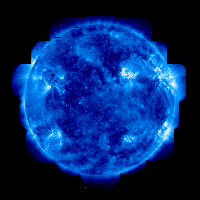

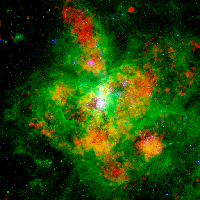
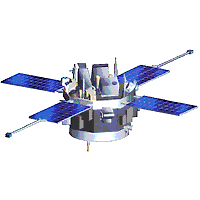
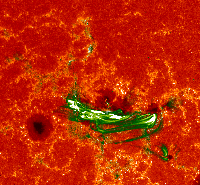
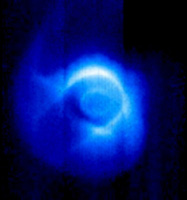
Questions and comments to: cosmicopia@cosmicra.gsfc.nasa.gov
Curator: Dr Eric R. Christian, NASA
Responsible NASA Official: Dr Eric R. Christian
Privacy Policy and Important Notices

HOME
In the News
History
Ask Us
Great Links
Glossary
Site Map
Search NASA